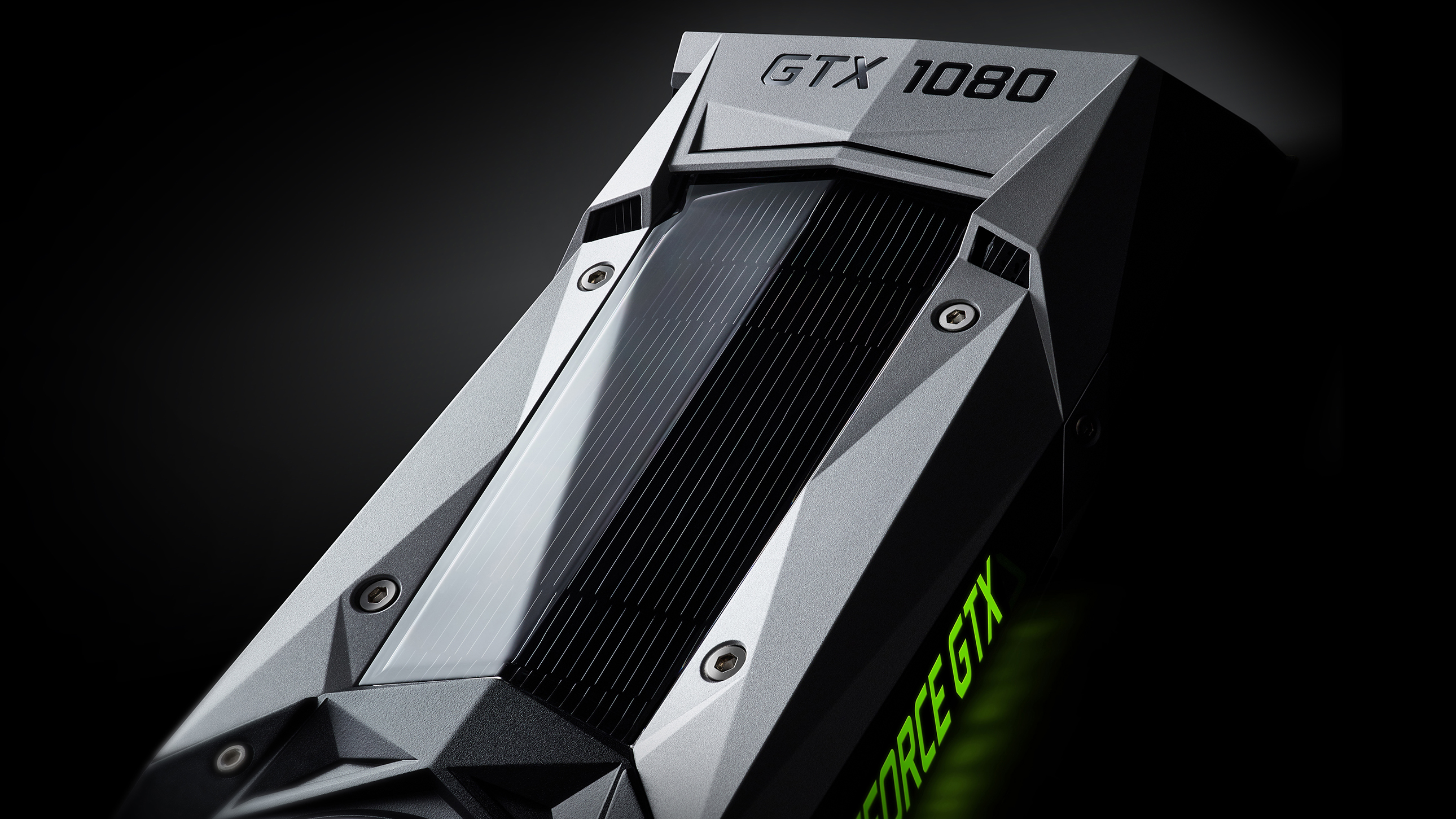You don't have to use three Nvidia GTX 1080s to run an HTC Vive, but it helps
Nvidia wants to be the obvious choice for VR

Nvidia has embraced VR in a big way as of late. Its recently announced GTX 1080 and GTX 1070 graphics cards are not only powerful enough to run demanding games at a VR-friendly 90 fps, but have also been accompanied by some seriously impressive VR sound technology.
Nvidia has partnered with HTC to use the Vive to show off its VR tech, but in an interview they emphasised that they're committed to keeping their products open and available for use with any VR technology.
Much has been made of the huge jump in power between last year's Nvidia GPUs and this year's releases, and it's hard to overemphasise quite how much of a jump this has been.
A rocket jump in performance
The GTX 1080 offers 9 TFLOPS of performance compared to the existing behemoth, the Titan X's 7 TFLOPS, despite retailing for just over half its price ($599/about £450 compared to $999/£899). The 1070 is more affordable at $379 (about £270) but still almost matches the Titan X with 6.5 TFLOPS.
The result is a comparatively affordable pair of cards that will happily provide a VR experience without you having to make many compromises when it comes to visual fidelity, or even power consumption. These are some seriously power-efficient cards, which hopefully means that we'll be seeing them make their way to laptops and other mobile devices soon (although a representative from Nvidia was unable to comment on future product plans).
These upgrades have been made possible by the new Pascal infrastructure, which as well as being a completely new architecture also features a die shrink from the 28nm fabrication used on last year's Maxwell GPUs to 16nm. For reference, Intel's latest generation of CPUs are 14nm.
The result? More transistors on a chip leading to more processing power and lower wattage requirements.
Sign up for breaking news, reviews, opinion, top tech deals, and more.
VR audio

This extra horsepower has obvious implications for the way VR looks, but Nvidia has also given some serious attention to how VR sounds with its new VRWorks Audio features.
VRWorks Audio essentially treats audio in the same way modern graphics engines treat light. Audio has a source and a direction, and depending on the surfaces the audio hits it will then bounce and echo realistically.
Thankfully this technology will work with your existing headphones. In Nvidia's setup, the audio passed through the HDMI cable feeding the HTC Vive headset, and you can then plug your headphones into the headset using a standard 3.5mm jack.
This audio technology was shown off using a stone-walled room with some clown heads floating around and cackling. This resulted in sounds that we could then hear echoing off the walls, but as always a public event is never the ideal way to experience the subtleties of audio technology. We look forward to trying out the tech in the comparatively much quieter techradar offices.
Inside the VR Funhouse
Despite the fact that Nvidia is emphasising that a single Pascal card has enough graphical horsepower for VR, the rig they used to show us its new Funhouse demo was powered by three GTX 1080's running in parallel.
A representative told us that two of the cards were set up in SLI to deliver visuals, with a third present to deal with audio and physics processing. This is a VR experience with no compromises, and will likely be out of the reach of most consumer's for quite some time.
Naturally, the results were appropriately impressive.

The demo threw everything it could at Nvidia's rig and didn't break a sweat. Liquid physics, particle effects and destructible objects were all on display, often simultaneously, and the headset maintained a solid 90 frames per second.
As with most of the VR demos we've tried, it was the little details that really sold the experience. It was nice enough seeing liquid behave realistically in the environment when we fired it from our water pistols, but feeling one of the controllers (acting as a bow) vibrate as a wooden arrow scraped across it was an incredibly immersive moment.
Incremental progress
We're not going to sit here and claim that $379 (about £270) is affordable for everyone, but it's an important step towards bringing VR into more people's homes. VR may still be facing enormous barriers, but at every event like this we're continuously surprised by the incremental improvements in the immersion of VR experiences.
More accurate sound is an important step towards presence, and although haptic feedback isn't an invention of Nvidia's, the effort it had put into the feedback in the demo was impressive.
There are still many kinks to iron out of VR, but if Nvidia is anything to go by, the hardware shouldn't be a problem for long.

Jon Porter is the ex-Home Technology Writer for TechRadar. He has also previously written for Practical Photoshop, Trusted Reviews, Inside Higher Ed, Al Bawaba, Gizmodo UK, Genetic Literacy Project, Via Satellite, Real Homes and Plant Services Magazine, and you can now find him writing for The Verge.